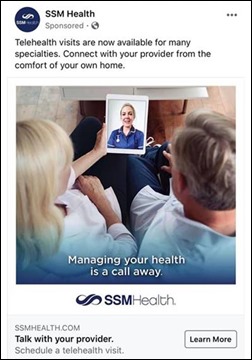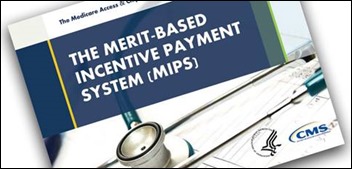Re: Dr Z. Great story, but whatever happened to professional courtesy???
EPtalk by Dr. Jayne 4/30/20

I’ve always enjoyed baking, and once upon a time, I even worked in a bakery. Even with exposure to some truly exceptional baking, I’m very impressed by the Chicago-area physician who is creating cookies to honor key figures in the COVID-19 pandemic. Her designs are hand painted and include tributes to physicians such as Anthony Fauci, Ohio’s Amy Acton, and others. Pediatrician Priscilla Sarmiento-Gupana is truly an artist and I wish her good health, along with many happy hours of baking.
CMS has suspended advance payments to providers and is re-evaluating accelerated payments to hospitals. Over $100 billion in loans has already gone out the door, but many healthcare delivery organizations are still struggling. The payments split 40/60 between Medicare Part B providers and hospitals. Recipients are expected to repay the funds within one year. Reasons for suspending the program include the availability of funds through other programs, such as those in the CARES Act, along with the Paycheck Protection Program and Health Care Enhancement Act.
Most studies indicate a 60% decline in outpatient visits during March. Factors at play include providers who want to reduce exposure to their staff, along with patients who don’t want to come into contact with COVID patients. Between 30-50% of physicians report using telehealth for at least a portion of visits. Some specialties, such as ophthalmology, have been hit harder than others, primarily due to recommendations from their professional societies about practice closures.

An intrepid reader sent me this ad from SSM Health that promotes telehealth visits. He notes that the clinician is wearing the traditional dress of nurses in the UK’s NHS. Last time I checked, SSM was located in the central US. They recently furloughed over 2,000 employees, and I wonder if eagle-eyed proofreaders were among those let go.
I often see companies using cheesy stock photos without thinking deeply about whether those photos actually convey the culture of their organization or whether they represent their employees and patients. The picture reminded me that I’m two episodes behind on the new season of “Call the Midwife,” so I know what I’ll be doing tonight.
EHR vendors continue to work to make it easier for clinicians to document patient visits. A recent article in the Journal of the American Medical Informatics Association looks at the accuracy of the physician’s note compared with a concealed audio recording obtained from an unannounced encounter with a standardized patient. Standardized patients are typically professionals who compensated for filling the patient role during a mock office visit, where the clinical team’s performance is evaluated.
Researchers looked at 105 encounters across 36 physicians. They found 636 documentation errors, with 181 findings being documented that did not actually occur and 455 findings that occurred but were not documented. Nearly 90% of the notes had at least one error, with 21 of them over-coded and 4 under-coded. Theoretically, technologies such as ambient clinical intelligence could provide a solution to these issues. I look forward to seeing data on how well it delivers on its promises.
I haven’t paid much attention to the attempts at delivering a virtual HIMSS20, but this week an email came through that listed a session I was actually interested in. Unfortunately, going to the site wasn’t fruitful, as I couldn’t find the session I was looking for. The site has filters but not a keyword search, and since I didn’t want to dig through dozens of screens, I gave up. I’m not sure how well-received HIMSS20 Digital has been, but I doubt I’ll be back.

April 30 is the last day to submit MIPS data for 2019. The data submission window closes at 8 p.m. ET. CHS has added flexibilities due to the stresses that COVID-19 has placed on healthcare providers. Individual clinicians who aren’t able to submit MIPS data by April 30 will qualify for the “automatic extreme and uncontrollable circumstances policy” and will receive a neutral payment adjustment for the 2021 MIPS payment year. Groups and virtual groups will have to submit an application for the exception, and those can also be submitted until 8 p.m. ET on April 30.

Speaking of deadlines, May 1 is the deadline for payers to submit proposals for the Primary Care First program. It seems like it’s been a million years since we’ve talked about programs like this, as opposed to emerging infectious diseases. Delivery of primary care services has been significantly changed by COVID-19 and it remains to be seen whether Primary Care First will even get off the ground, let alone have the power to transform care.
I’m a sucker for evidence-based and data-driven approaches, so I enjoyed learning about the new scoring system that is being discussed by the American College of Surgeons to help surgery departments start scheduling medically necessary operations. The system looks at the level of hospital resources needed, the impact of a treatment delay on a patient, and the risk the procedure poses for the surgical team. The Medically Necessary Time-Sensitive (MeNTS) Prioritization process was published ahead of print and is gaining interest among surgeons who are operating under differing guidelines from various subspecialty organizations.
The system has been in use at the University of Chicago for approximately two weeks. They have been able to increase the number of non-emergency surgeries performed to approximately 15 per day. I’m sure that’s a far cry from their usual surgery volume, but hopefully the scoring system will help create a path forward.

Recent updates to Microsoft Word have been driving me crazy. I was glad to have my experience validated by a recent article in Smithsonian Magazine. Millions of typists were taught to place two spaces after a period, while modern keyboarding technique now only includes one space. I’m thinking about trying to teach myself to type with only one space at the end of a sentence. It might be something to challenge my brain since I’m not working clinical shifts. In the mean time, I’ve asked the new editing tool to tolerate my double-spacing.
One space or two? Leave a comment or email me.

Email Dr. Jayne.


2 spaces. Always. I’ve had it drilled into me since the 5th grade, and I’m not about to change now.
Two spaces were used by old time printers b/c it allowed more latitude to adjust lines with the lead inserts. Nowadays, it’s a vestigial. I’ve used MS WORD “find and replace” to get rid of some of my “unwanted” spaces when the publisher demands only one space.
It’s been one space for almost 30 years. Once we moved from monospaced typefaces, the two spaces were no longer necessary (they were there to improve readability). If we defiantly say, “I’m not going to change now” when it comes to a period, what does that say about our ability to change healthcare?
I hear people say that one space has been the standard for 30 years )or more sometimes) but I was in high school less than 20 years ago and was taught two spaces. So maybe the “one spacers” have been established in certain industries for a while, but it definitely wasn’t an overall standard for that long.
Your highschool teachers no doubt learned the double space and passed it down without adapting the modern practice.
Happens in typing. Happens in medical training.
What’s the saying? Something like “10 years for innovation to spread”.
I think the overeating point is – let’s all be a little more adaptable and exhibit a willingness to learn new things. Even small ones.
I read an article a few years back, one of the tools to identify how old one might be when applying for a job was if one used one or two spaces after a period!!
When I see two spaces, I think, “Here is someone who does not incorporate new information into their daily practices.” I do not, however, research or document anything that indicates a job applicant’s age because such practices constitute age discrimination. At least in my state, probably federally as well.
One space. It is cleaner and tighter. I admit that in the time of physical distancing, letters may be safer from one another if there are two spaces between the end of one sentence and the beginning of the next. But hold the line, I say!
Definitely 2 spaces. If the software could adjust to make 1 space look like 2, then why can’t it make 2 spaces look like the enhanced 1 space if that’s what we prefer since we’ve been doing it for decades?
Since you like data driven stuff, check out the Epic Deterioration Index that’s being applied to COVID-19: https://www.healthcareittoday.com/2020/04/29/hospitals-testing-out-epic-ai-tool-to-predict-covid-19-patients-progress/ You’ll love the Twitter thread on it that’s noted at the start.
After using 2 spaces for 40+ years (including 25 years of heavy typing volume as a medical transcriptionist), I grudgingly and reluctantly switched to 1. I was shocked how quickly I was able to make the change. The first couple of days were painful, but the learning curve didn’t extend much beyond that.
I like 2 spaces to differentiate between the end of a sentence and an abbreviation.
They’ll pry my second space out of my cold, dead hands.
Two spaces in the place of one? I can live.
Three periods used habitually to replace one-in-every-four-spaces? I can’t conclusively blame misused ellipses for losing my hair, but I can try.
I hate to be mean this time, but it should be “in the meantime”.